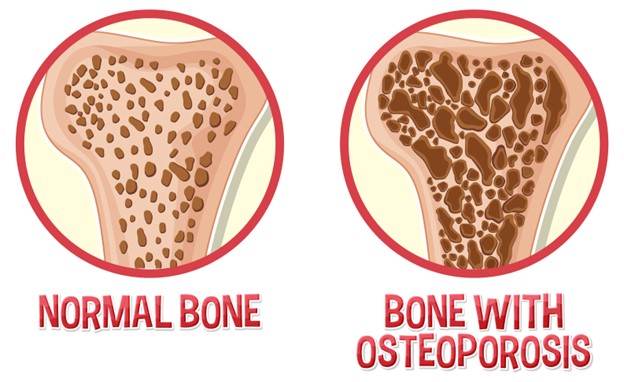Bones are not just rigid structures in our bodies. They help us move, support our weight, and guard our organs. Without healthy bones, simple activities could become challenging. This is where understanding osteo troubles, such as osteoporosis, is vital.
Osteoporosis is a common condition but often ignored. It makes bones weak and easy to break, and it affects millions around the world. Many might not even realize they’re at risk until it’s too late. This guide aims to shed light on how to keep bones strong and prevent the onset of such conditions. We’ll cover bone strengthening foods, osteoporosis physical exercise, and practical steps towards optimal bone health.
Exploring the Causes, Risk Factors, and Impact of Osteoporosis
Osteoporosis happens when bones become less dense and fragile. This means they can break more easily. Imagine a sturdy stick becoming thin and easy to snap. That’s what occurs with bones in osteoporosis.
Several factors may lead to this condition:
- Age: As people age, bones naturally lose density.
- Gender: Women, especially post-menopausal, are at a higher risk.
- Lifestyle choices: Lack of exercise and poor diet can lead to weak bones.
- Genetics: Family history plays a role, too.
- Urban Indian challenges: Urban lifestyles often limit exposure to sunlight, affecting Vitamin D levels, and busy lives might lead to less physical activity.
The impact goes beyond just bone breaks. Osteoporosis can alter lives drastically. For individuals, it can mean a decrease in mobility and independence. Families might see loved ones require more care. Societal costs include healthcare expenses and loss of productivity. Emotional impacts are significant, with many facing feelings of isolation or frustration due to reduced abilities.
Proactive Prevention: Diet, Exercise, and Lifestyle Changes
Keeping bones healthy requires attention to diet, exercise, and lifestyle. Here are some pointers:
Diet
- Calcium and Vitamin D: Essential for strong bones. Include dairy, fish, and fortified cereals. In an Indian diet, paneer and lentils can be excellent choices.
- Foods that help bone density: Incorporate nuts, seeds, and leafy greens like spinach and bok choy in meals. These are foods for strong bones and can prevent fractures.
Exercise
- Weight bearing exercises for bone loss: These exercises, like brisk walking, strengthen bones by making them work against gravity.
- Increase bone strength exercise: Activities such as yoga enhance flexibility and balance, reducing fall risks.
Lifestyle Changes
- Avoid smoking and keep alcohol in moderation. Both harm bones over time.
- Try to get outside. Natural sunlight boosts Vitamin D levels, which is crucial for bones.
Incorporating these steps might seem hard in a busy city life, but small changes, like short daily walks and a balanced diet, can make a huge difference.
Empowering Action: Screening, Supplementation, and Daily Management
To keep up with bone health, proactive steps are essential.
Screening
- Regular check-ups and bone density scans can spot issues early. It’s better to catch problems before they worsen.
Supplementation
- Sometimes, diets alone may not give enough nutrients. Guidance on osteoporosis dietary supplement use is beneficial. Calcium and Vitamin D pills are common but should be taken as recommended.
Daily Management
- For those diagnosed, managing osteoporosis daily involves precaution. Ensure safe environments to prevent falls, such as keeping floors clear.
- Stay active but avoid high-impact sports which may risk further damage.
- Stay engaged and social. This helps emotional well-being, encouraging a positive outlook towards life despite osteoporosis.
Through these tips, maintaining bone health becomes more manageable. By understanding osteoporosis and addressing it with diet, exercise, and lifestyle improvements, building stronger bones becomes achievable for everyone.


